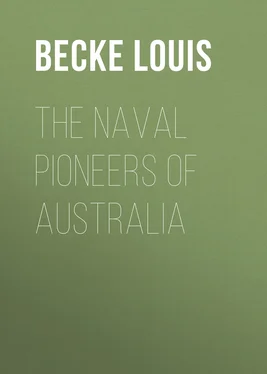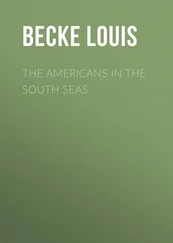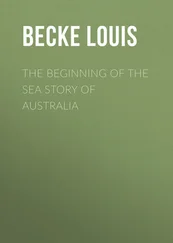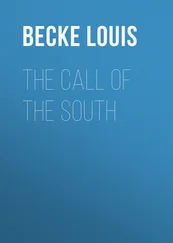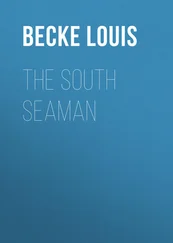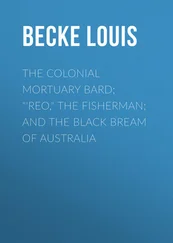Louis Becke - The Naval Pioneers of Australia
Здесь есть возможность читать онлайн «Louis Becke - The Naval Pioneers of Australia» — ознакомительный отрывок электронной книги совершенно бесплатно, а после прочтения отрывка купить полную версию. В некоторых случаях можно слушать аудио, скачать через торрент в формате fb2 и присутствует краткое содержание. Жанр: foreign_prose, literature_19, foreign_antique, на английском языке. Описание произведения, (предисловие) а так же отзывы посетителей доступны на портале библиотеки ЛибКат.
- Название:The Naval Pioneers of Australia
- Автор:
- Жанр:
- Год:неизвестен
- ISBN:нет данных
- Рейтинг книги:4 / 5. Голосов: 1
-
Избранное:Добавить в избранное
- Отзывы:
-
Ваша оценка:
- 80
- 1
- 2
- 3
- 4
- 5
The Naval Pioneers of Australia: краткое содержание, описание и аннотация
Предлагаем к чтению аннотацию, описание, краткое содержание или предисловие (зависит от того, что написал сам автор книги «The Naval Pioneers of Australia»). Если вы не нашли необходимую информацию о книге — напишите в комментариях, мы постараемся отыскать её.
The Naval Pioneers of Australia — читать онлайн ознакомительный отрывок
Ниже представлен текст книги, разбитый по страницам. Система сохранения места последней прочитанной страницы, позволяет с удобством читать онлайн бесплатно книгу «The Naval Pioneers of Australia», без необходимости каждый раз заново искать на чём Вы остановились. Поставьте закладку, и сможете в любой момент перейти на страницу, на которой закончили чтение.
Интервал:
Закладка:
Compare this end-of-the-century story with that of the loss of the Wager , one of the ships of Anson's squadron; and compare the behaviour of the Wager's castaways with that of the bluejackets who stood to attention on the deck of the Victoria till the word was given to jump as the ship heeled over—recent instances quoted merely because they occur to the writers' minds, for there are any number of others. Such cases illustrate forcibly this truth: we have, by careful training of the modern sailor, added to the traditional bravery of the class a quality, not lacking, but never properly developed, in the old type, that is, the dignity of coolness and self-restraint, the perfect control of men in the supreme moments of excitement and death.
Dampier's men, from a very early stage in his voyage, were a trouble to him. Two only of them, he says, had ever crossed the line, and he was in continual fear of some sickness arising because they were too lazy to shift themselves, but would lie in their hammocks in wet clothes. Three months after the ship got to sea, when nearing Brazil, he tells us that
"the disorders in my ship made me think at present that Pernambuco would not be so fit a place for me, being told that ships ride there two or three leagues from the town, under the command of no forts; so that whenever I should have been ashore it might have been easy for my discontented crew to have cut or slipt their cables, and have gone away from me, many of them discovering already an intention to return to England, and some of them declaring openly that they would go no further onwards than Brazil. I altered my course, therefore, and stood away from Bahio de todos los Santos, or the Bay of All Saints, where I hoped to have the governor's help, if need should require, for securing my ship from any such mutinous attempt, being forced to keep myself all the way upon my guard and to lie with my officers, such as I could trust, and with small arms, upon the quarterdeck, it scarce being safe for me to lie in my cabin, by reason of the discontents among my men."
Similar instances of the ill-discipline of the ship are given at intervals throughout Dampier's account of his voyage, and the commander and his officers were all on bad terms with each other, which, however, so far as can be judged now, was, in some degree, the fault of Dampier's uncertain temper.
The scientific results of the Roebuck's voyage were, chiefly on these accounts, of no great importance, judged by the standard of such work to-day; but, with the state of nautical science at the time, not much was to be expected in the way of accurate surveying.
When Dampier set out to explore the coast of New Holland, what charts, what instruments, what scientific knowledge and equipment, had he for the work?
Dampier's time was distinctively an intermediate period. Little more than a century had elapsed since Gerard Mercator's chart was published, and Edward Wright had taught its true principles, and about half a century before the voyage of the Roebuck such improvements as Gunter's application of logarithms to nautical calculations, middle latitude sailing, and the measurement of a degree on the meridian were introduced. Hadley's quadrant came thirty years after Dampier, who must have used Davis' instrument, then about ninety years old. Davis' work on navigation, with Wright's chart showing the northern extremity of Australia, and Addison's Arithmetical Navigation (1625) were, no doubt, text-books on board the Roebuck . Longitude by chronometer was to come half a century after Dampier was in his grave, and such charts as he possessed did little more than indicate the existence of Terra Australis. The Portuguese, Spanish, and Dutch maps were not easy for Englishmen to procure, and all that Dampier has to say on the matter is:—
"But in the draught that I had of this coast, which was Tasman's, it was laid down in 19 degrees, and the shore is laid down as joining in one body or continent, with some openings appearing like rivers, and not like islands, as really they are.... This place, therefore, lies more northerly by 40 minutes than is laid down in Mr. Tasman's draught, and besides its being made a firm, continued land, only with some openings like the mouths of rivers, I found the soundings also different from what the line of his course shows them, and generally shallower than he makes them, which inclines me to think that he came not so near the shore as his line shows, and so had deeper soundings, and could not so well distinguish the islands. His meridian or difference of longitude from Sharks' Bay agrees well enough with my account, which is 232 leagues, though we differ in latitude. And, to confirm my conjecture that the line of his course is made too near the shore, at least not so far to the east of this place, the water is there so shallow that he could not come there so nigh."
That the narrative of Tasman's voyage was at 1638-1697that time in existence there is little doubt, and an outline of the coasts visited by him was given in an atlas presented to Charles II. of England, in 1660, by Klencke, of Amsterdam, and now in the British Museum. Major also found in the British Museum copies of charts and a quantity of MS. describing Tasman's 1644 voyage, which, there is reason to believe, were made from Tasman's originals by one Captain Bowrey in 1688, who had spent fourteen years before that date trading in the Dutch East Indies. These documents are all that have been found, and a diligent search of geographers still leaves undiscovered Tasman's original narrative. The 1688 copies were probably known to Dampier when he sailed in the Roebuck , and he was, likely enough, supplied with specially made duplicates by the naval authorities. In 1697 a translation of a French book was published in England by John Dunton, of the Poultry, London, with the title A New Discovery of Terra Incognita Australis, or the Southern World, by James Sadeur, a Frenchman. The Frenchman told a story of thirty-five years' adventures in New Holland; but his tale was a lie from beginning to end. Coming so close to the date of Dampier's voyage, it is worth noting that he does not allude to the book, and so probably, notwithstanding the little knowledge Englishmen then had of the southern continent, Dampier was shrewd enough to detect the imposture.
The Roebuck struck soundings on the night of August 1st, 1699, upon the northern part of the Abrolhos. Dampier then cautiously ran northward, keeping the land in sight until he anchored in Dirk Hartog's Road, in a sound which he named Sharks' Bay, for the reason that his men caught and ate, among other things, many sharks, including one eleven feet long, and says Dampier, "Our men eat them very savorilly." He gives us, too, a description of the kangaroo, the first introduction of that animal to civilization. Says the navigator, "The land animals that we saw here were only a sort of racoons, different from those of the West Indies, chiefly as to their legs; for these have very short fore legs, but go jumping upon them as the others do, and, like them, are very good meat."
Sharks' Bay is in what is now called the Gascoyne division of West Australia, after the river of that name. Its chief town is Carnarvon, situated at the mouth of the river. Wool-growing 1699is the principal industry, and the population is about 800.
Dampier stayed eight days in the bay, then ran northward along the coast, discovering the archipelago named after him, and himself naming Rosemary Island, which lies off the coast close to Roeburne, the chief town of the north province of the colony. From here he continued his course north till he reached Roebuck Bay, a few leagues to the south of the scene of his first visit, and where is now the town of Broome. The Eastern Extension Telegraph Cable Company's alternative cable from Banjoewangi comes in here, and the town has additional importance as being the harbour for a large pearling fleet.
Читать дальшеИнтервал:
Закладка:
Похожие книги на «The Naval Pioneers of Australia»
Представляем Вашему вниманию похожие книги на «The Naval Pioneers of Australia» списком для выбора. Мы отобрали схожую по названию и смыслу литературу в надежде предоставить читателям больше вариантов отыскать новые, интересные, ещё непрочитанные произведения.
Обсуждение, отзывы о книге «The Naval Pioneers of Australia» и просто собственные мнения читателей. Оставьте ваши комментарии, напишите, что Вы думаете о произведении, его смысле или главных героях. Укажите что конкретно понравилось, а что нет, и почему Вы так считаете.
